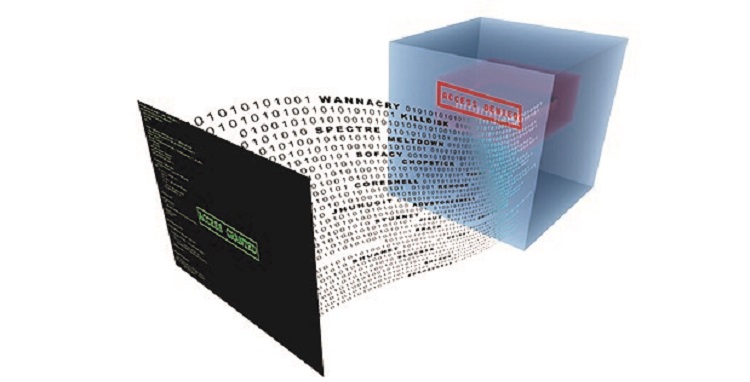This month, DARPA will bring a demonstration version of a secure voting ballot box equipped with hardware defenses in development on the System Security Integrated Through Hardware and Firmware (SSITH) program to the DEF CON 2019 Voting Machine Hacking Village (Voting Village). The SSITH program is developing methodologies and design tools that enable the use of hardware advances to protect systems against software exploitation of hardware vulnerabilities. To evaluate progress on the program, DARPA is incorporating the secure processors researchers are developing into a secure voting ballot box and turning the system loose for public assessment by thousands of hackers and DEF CON community members, the agency announced August 1.
Many of today’s hardware defenses cover very specific instances or vulnerabilities, leaving much open to attack or compromise. Instead of tackling individual instances, SSITH researchers are building defenses that address classes of vulnerabilities. In particular, SSITH is tackling seven vulnerabilities classes identified by the NIST Common Weakness Enumeration Specification (CWE), which span exploitation of permissions and privilege in the system architectures, memory errors, information leakage, and code injection.
“There are a whole set of cyber vulnerabilities that happen in electronic systems that are at their core due to hardware vulnerabilities – or vulnerabilities that hardware could block,” said Dr. Linton Salmon, the program manager leading SSITH. “Current efforts to provide electronic security largely rely on robust software development and integration, utilizing an endless cycle of developing and deploying patches to the software firewall without addressing the underlying hardware vulnerability. The basic concept around SSITH is to make hardware a more significant participant in cybersecurity, rather than relegating system security only to software.”
Under the SSITH program, researchers are exploring a number of different design approaches that go well beyond patching. These include using metadata tagging to detect unauthorized system access; employing formal methods to reason about integrated circuit systems and guarantee the accuracy of security characteristics; and combining hardware performance counters (HPCs) with machine learning to detect attacks and establish protective fences within the hardware. One team from the University of Michigan is developing a novel security approach that changes the unspecified semantics of a system every 50 milliseconds. Currently, attackers continuously probe a system to locate these undefined sections and, over time, are able to create a system map to identify possible hacks. By changing the construct every 50 milliseconds, attackers do not have enough time to find those weaknesses or develop an accurate representation of the system as a whole.
To evaluate the hardware security concepts in development on the SSITH program, DARPA – working with Galois – is pursuing a voting system evaluation effort to provide a demonstration system that facilitates open challenges. The program elected to use a voting system as its demonstration platform to provide researchers with an accessible application that can be evaluated in an open forum. Further, the topic of election system security has become an increasingly critical area of concern for the hacker and security community, as well as the United States more broadly.
“DARPA focuses on creating technologies to enhance national defense, and election system security falls within that remit. Eroding trust in the election process is a threat to the very fabric of our democracy,” noted Salmon.
While protecting democracy is a critical national defense issue, SSITH is not trying to solve all issues with election system security nor is it working to provide a specific solution to use during elections. “We expect the voting booth demonstrator to provide tools, concepts, and ideas that the election enterprise can use to increase security, however, our true aim is to improve security for all electronic systems. This includes election equipment, but also defense systems, commercial devices, and beyond,” said Salmon.
During DEF CON 2019, the SSITH voting system demonstrator will consist of a set of RISC-V processors that the research teams will modify to include their SSITH security features. These processors will be mounted on field programmable gate arrays (FPGAs) and incorporated into a secure ballot box. Hackers will have access to the system via an Ethernet port as well as a USB port, through which they can load software or other attacks to challenge the SSITH hardware. Since SSITH’s research is still in the early stages, only two prototype versions of the 15 processors in development will be available for evaluation.
“At this year’s Voting Village, hackers may find issues with the processors and quite frankly we would consider that a success. We want to be transparent about the technologies we are creating and find any problems in these venues before the technology is placed in another venue where a compromise could be more dangerous,” said Salmon.
Following DEF CON 2019, the voting system evaluation effort will go on a university roadshow where additional cybersecurity experts will have an opportunity to further analyze and hack the technology. In 2020, DARPA plans to return to DEF CON with an entire voting system, which will incorporate fixes to the issues discovered during the previous year’s evaluation efforts. The 2020 demonstrator will use the STAR-Vote system architecture, which is a documented, open source architecture that includes a system of microprocessors for the voting booth, ballot box, and other components. It also includes a verifiable paper ballot, providing both digital and physical representations of the votes cast within the booth.
“While the 2020 demonstrator will provide a better representation of the full attack surface, the exercise will not result in a deployable voting system. To aid in the advancement of secure election equipment as well as electronic systems more broadly, the hardware design approaches and techniques developed during the SSITH program will be made available to the community as open-source items,” concluded Salmon.









